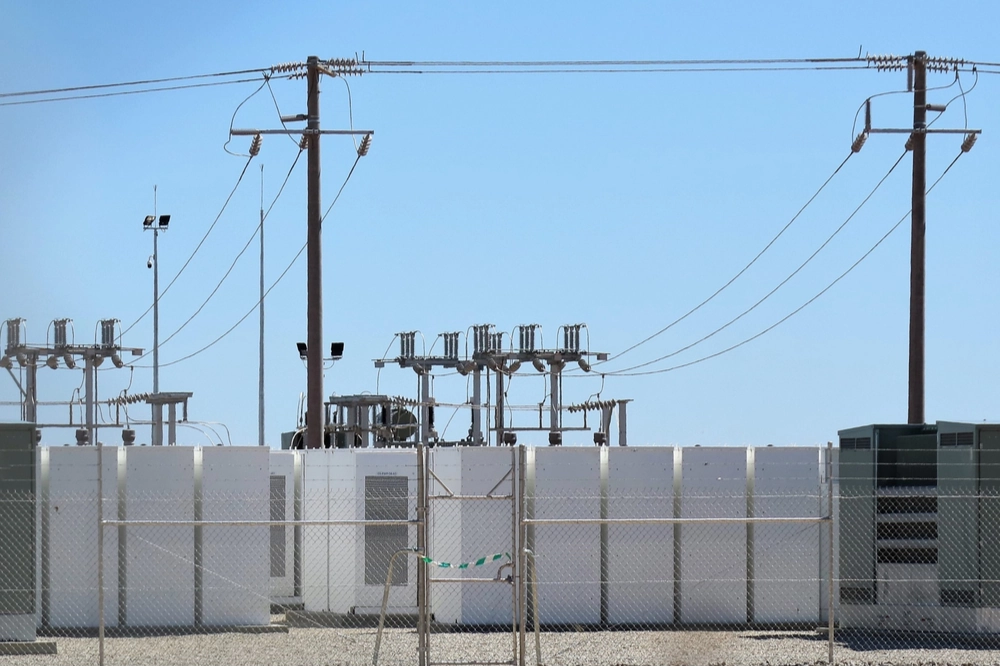
Partner
Projects, Infrastructure & Construction | Dispute Resolution | Energy & Infrastructure
This website will offer limited functionality in this browser. We only support the recent versions of major browsers like Chrome, Firefox, Safari, and Edge.

By Dickon Court, Catherine Haugh, Gena Ritchie
23 Nov 2023 | 13 minute read
Regen's latest figures show there are over 395GW of generation projects currently seeking to connect to the transmission network and 113GW currently in the distribution queue. Connections reform is happening, but it is still difficult to understand how the process will work.
The CMP376 decision was published on 13 November 2023 and will take effect on 27 November 2023. It brings in a queue management process to the transmission network, to a degree bringing it into line with the distribution network. For those that have been following the options, WACM7 has been adopted, meaning that Queue Management will apply to connection offers and contracts currently in the queue (though not those completing in the next 2 years).
The current Queue Management provisions largely mean being able to terminate projects out of the queue, meaning shorter waits for those projects actually ready to build. Wider proposals about gateways and the ability to move projects up and down the queue remain under discussion, but it is very positive that change is starting to happen.
As a renewable energy disputes team, our input is focused below on whether and how it will be possible to challenge or examine decisions made on queue management. Whatever the eventual system looks like, it is going to be complex. There will be teething problems (and probably more than that). Being able to challenge and question decisions that seem to be wrong or poorly reasoned is one of the main ways that the process becomes better and more efficient. That must be a good thing.
Legal challenges are of course expensive, time consuming, frustrating and damage relationships. We are by no means recommending them as a common or general tool. That said, processes which cannot be questioned are more likely to be unfair and any problems with them will simply sit there not being remedied. If a mistake or an unfair decision is made there should be a way to address it. Even if it can't be changed, there should be a deterrent to making the same mistake again.
The current first come, first served system is simple. There is not much to assess. That doesn't however mean it is always fair. National Grid ESO and the DNOs are no doubt doing their best and we want to support them. But they can make mistakes and those mistakes can have really dramatic consequences for those trying to progress projects. At the moment, there is very little to be done about those mistakes and that adds to the problem of the blockage in the queue. Investors and developers are currently taking much of the risk of this part of the energy transition. A good element of that risk is fair enough - the potential returns are significant enough to justify it. In our view however, there needs to be a bit of balance removing artificial issues or unnecessary bear traps.
We recently heard about a distribution connected project that was almost into the construction phase, with all contracts let, when the costs for reinforcement at the transmission level jumped so high that the project became commercially unviable. The connection offer had given an indication that no transmission reinforcement works would be needed. That potentially causes huge loss. It doesn’t just mean the additional cost of the reinforcement works, it means the entire sunk cost of the project is wasted. If that was the result of a mistake, it would not be appropriate when the company in question did everything right. The connection offer has the normal exclusions or limitations of liability. There is not much they can do and absent connections reform there would be little way for the process to improve.
It is in that context that we look at the connections reform proposals. The more gateways, milestones and assessments that there are, the more chances there are for mistakes to be made. Even if not mistakes, procedural unfairness or differences across regions or assessors are possible. If we don’t have any way to understand and question those processes, they are more likely to be flawed in the long term. So what do we have available?
The relevant contract for any contractual challenge to a decision on connection is likely the Connection Offer, BEGA, BELLA, LEEMPS etc. It’s a fairly standard form back end of a contract which gives the DNO or National Grid ESO a lot of protection. As to delay (very common!), the only obligation on the DNO (for example) is normally to use reasonable endeavours to mitigate delay. That is not a very high bar and is difficult to challenge. As to liability (and while it seems generally quite reasonable), there is a full limitation on any loss of profit, revenue, contract, economic loss or similar. The only loss claimable is normally the elements that cannot be excluded (fraud, death or personal injury). In short, the DNO (or NG, TO) can delay under the terms of the contract. Even if it breaches the terms of the contract, a developer is unlikely to be able to claim anything. If delay or mistakes in the work undertaken do cause loss, that’s the risk.
With such a broad limitation of liability imposed through standard T&Cs, a lawyer would usually ask whether the limitation is effective under the Unfair Contract Terms Act 1977. Looking at the 'reasonableness' test, you might initially think this is unfair – the party proffering the standard terms has far greater bargaining power and won't negotiate them. There is no way to avoid these standard terms. No-one else offers a version of a connection offer without them and you need to be with your regional DNO anyway. However, these clauses are standard and well understood, and a policy reason sits behind them. Without them, the system as currently in place likely could not operate. So they are less likely to be 'unfair'. It also seems possible that the ESO wouldn't be classed as a business (a requirement under the Act) but that is a whole other discussion.
The Ombudsman is generally irrelevant to business disputes, which should escalate through the relevant complaints procedure before being referred to GEMA/OFGEM. In theory, this is the route to take to determine connection issues. It may allow mistakes to be addressed. However, unless you know a mistake has happened, there is nothing to do. Furthermore, where action is not in breach of a contract or a licence, it seems unlikely that there will be a remedy that helps your project.
Success on an Ofgem complaint would require Ofgem to be satisfied that there had been a contravention by the ESO/DNO of a condition or requirement of a licence or similar, and as things stand we are not aware of any suggestion that that's the case for delay or changes to connection costs/securities. That's not to say though that Ofgem has no role to play here. Indeed, Ofgem seems to be fully involved in the reforms process, but at present, problems with the connections process seem unlikely to be raised to Ofgem on an individual project basis.
National Grid ESO (and NGs other forms) are very likely subject to judicial review. Their actions are either statutory or have a 'sufficiently public law flavour'. That said, we don't know of any NGESO decisions which have been directly challenged as, usually, the challenge would be made after Ofgem had made a determination (so the review would be against Ofgem). It is far less clear that actions of a DNO are subject to judicial review, though you could try to make an argument that they have monopolistic public powers it might be a bit of a stretch. Ofgem/GEMA decisions after the complaints process has been exhausted are open to challenge through judicial review and there have been numerous such challenges.
Judicial review is designed to ensure that public decisions are lawful, procedurally fair and rational. It is a remedy of last resort. Essentially, you have to go through contractual claims, appeals and complaints avenues first. However, if you have done that, you can ask a court to consider a decision that was illegal, irrational, procedurally unfair or in breach of a legitimate expectation. If a decision maker such as Ofgem has taken a decision and not taken account of all material considerations, misapplied its own guidance or made an irrational mistake that no reasonable person could make, then judicial review could be useful. Public bodies tend to be very wary of such applications and may reconsider their decisions, even when threatened with it. Normally, the remedy is that the relevant decision is 'quashed' and must be undertaken again. That may or may not be useful – the same decision may be reached, but it is of course a prompt to good, rational decision making taking into account all the facts.
As to legitimate expectations, if NGESO gives clear assurances as to how it proposes to act in respect of new gateways and milestones, it will normally be required to comply with those assurances without a good reason. That may well be relevant for the next stages of connections reform but, at present, judicial review seems unlikely to have much facility for queue management or similar issues unless a systemic issue is uncovered.
One of the most interesting bits of CMP376 (for us lawyers) is that any appeal from a decision on the new milestones or queue management process results in use of Section 7.4 of the CUSC entitled 'other disputes'.
That means that first there has to be a meeting within 10 Business Days. If nothing can be resolved then the dispute is referred to arbitration pursuant to the rules of the Electricity Arbitration Association ("EAA"). Those rules provide for a timetable and a reasonably standard dispute resolution process between the parties.
That means that, from a transmission perspective, after Monday 27 November 2023, a developer (or other party) unhappy with a CMP376 based decision can bring a dispute against the ESO without going through an Ofgem process.
This right applies only as a last resort and must link directly to milestone evidence requirements or the validity of an exception. However, it still seems to be potentially useful and to be a significant change that might continue and evolve through future connections reform.
Arbitration is not generally quick or cheap. But it is focused and effective to resolve these kinds of disputes. It does not seem unlikely that some disputes will be referred to the EAA. While the drafters/ESO consider that the evidence requirements are going to be as clear as possible to remove subjectivity, we can see routes to ambiguity or issues. For example:
It is important to note that CMP376 only relates to transmission network connections and not distribution connections, where the equivalent route under the ENA distribution queue management guidance remains contractual through the DNO appeal process then to the Ofgem complaints process.
Our understanding currently is that the EAA has not been a much-used forum, though it has been in place for a significant period. We will review and consider the rules in more detail in a future insights article.
One thing that CMP376 has made clear is that your position in the queue will not be held while an appeal goes through the EAA. That may dissuade parties from taking appeals as, even if they win, there may be a lot of sunk cost without being able to achieve the earlier connection date they wanted. The ESO/TO will try, after a successful appeal, to remediate projects back into the connections pipeline as close to their position as possible, but it is not clear how possible that will be.
To bring a dispute or to understand an ESO or other decision on queue management, it seems pretty clear that ESO will have to give reasons for their decisions. Otherwise, a party will have little or nothing on which to base a question or claim. Reasons are also clearly necessary to allow development of precedent setting where the rules do allow for interpretation or ambiguity. That can only improve the process.
However, it is not clear at the moment that ESO is planning to provide reasons. The Q&A document attached to the ESO July 2023 Launch Events presentation asked this question, admittedly about the wider ESO plans for queue management and not CMP376. The response was that ESO "will consider further if we would publish why a particular site's application was rejected".
This is not entirely clear, but our plea to the ESO is that, both for CMP376 decisions and any later decisions on gateways/queue movement, reasons are published for termination/rejection etc. That is the usual obligation on a quasi public body making decisions. It allows questions and challenge. That may imply additional cost and it may allow frustrating and difficult claims to arise against ESO, but in our view it is worth it to help the process to improve and to be fair.
For similar reasons, our current view is that the queue should be published in some form.
As the Connections Action Plan continues, we will continue to consider how parties can question decisions or ask that they be reconsidered. If and when we do get to the stage of projects moving up and down the queue based on factors/gateways etc, the need for the decisions and discretion to be justified (and seen to be justified) and to be exercised fairly will be even more acute.
If you would like to discuss the issues explored in this article in more detail, please do get in contact.